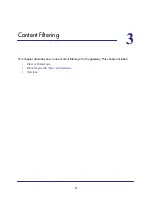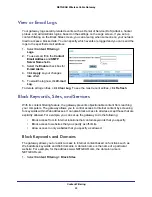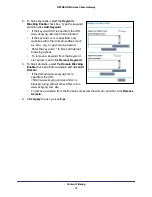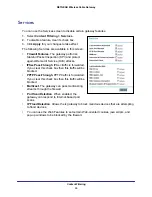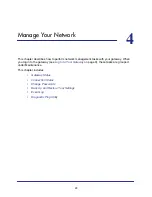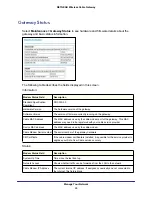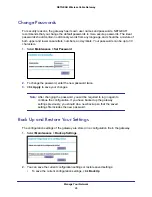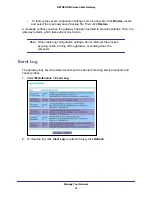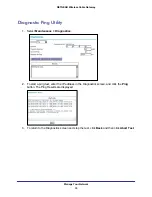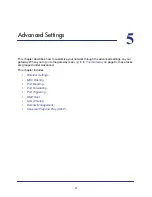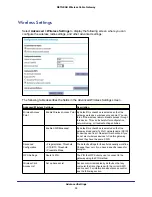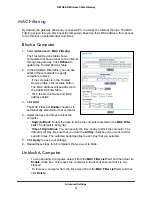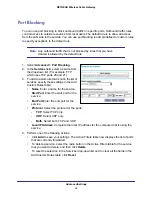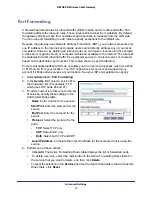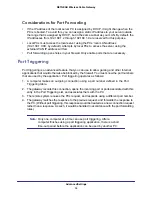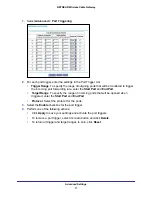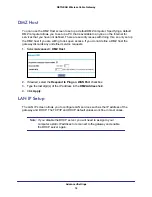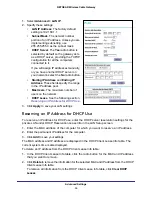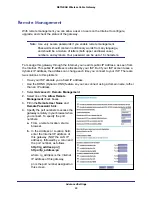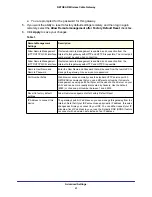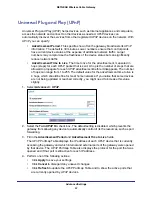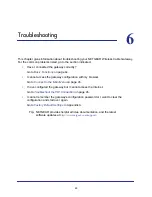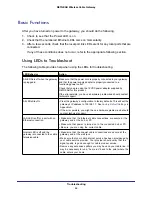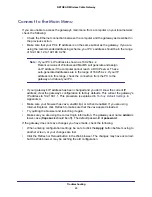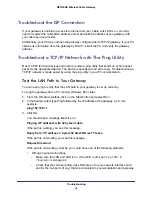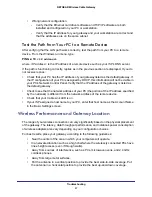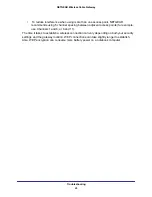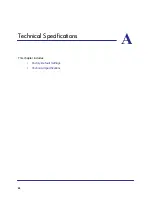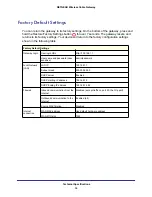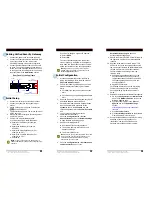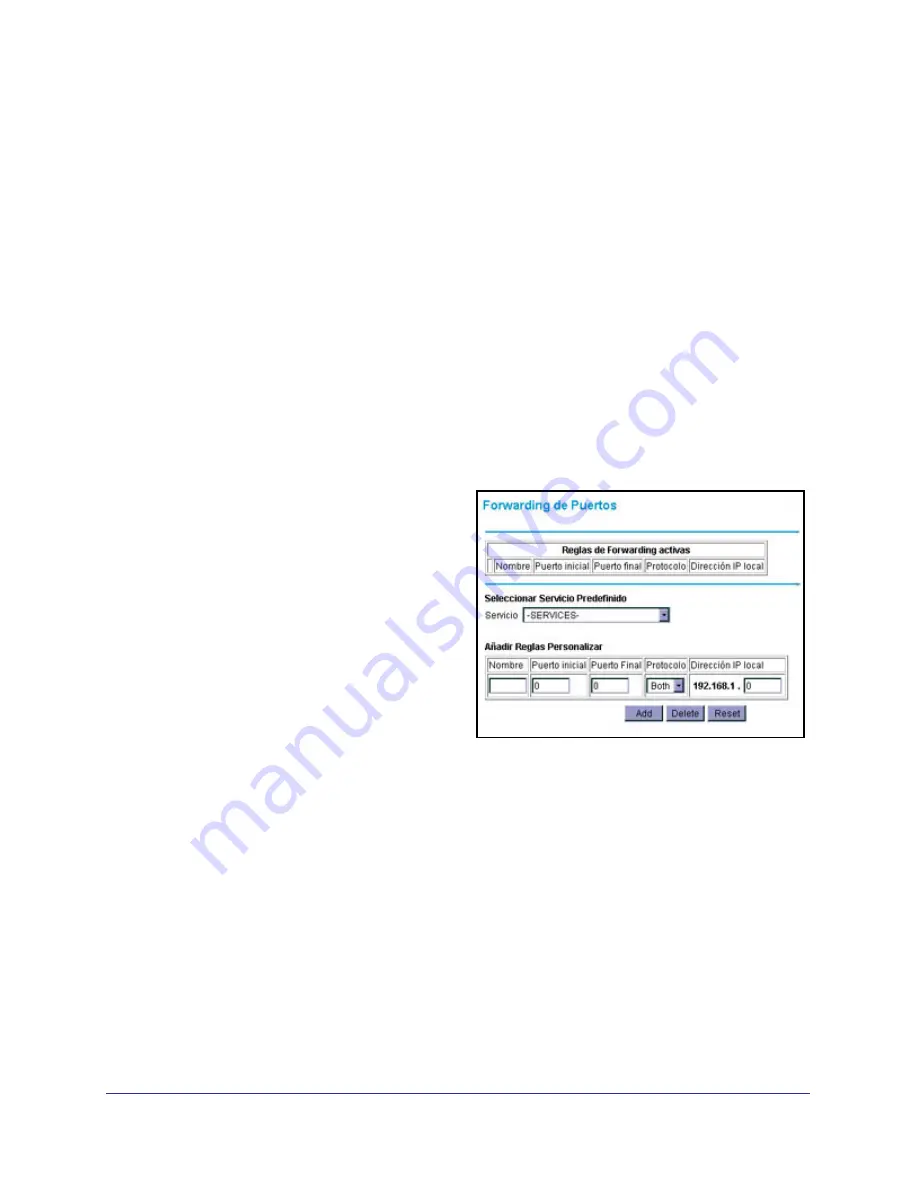
Advanced Settings
35
NETGEAR Wireless Cable Gateway
Port Forwarding
A firewall has default rules for inbound traffic (WAN to LAN) and for outbound traffic. Port
forwarding affects the inbound rules. These rules restrict access from outsiders. By default,
the gateway blocks access from outside except responses to requests from the LAN side.
You can use port forwarding to add rules to specify exceptions to the default rule.
Because the gateway uses Network Address Translation (NAT), your network presents only
one IP address to the Internet, and outside users cannot directly address any of your local
computers. However, by defining an inbound rule you can make a local server (for example,
a web server or game server) or computer visible and available to the Internet. The rule tells
the Gateway to direct inbound traffic for a particular service to one local server or computer
based on the destination port number. This is also known as port forwarding.
Some residential broadband ISPs do not allow you to run server processes (such as a Web
or FTP server) from your location. Your ISP might check for servers and suspend your
account if it finds active services at your location. See your ISP’s Acceptable Use policy.
1.
Select
Advanced > Port Forwarding
.
2.
In the
Service
field, select a service from
the drop-down list. (For example, FTP,
which uses TCP ports 20 and 21.)
3.
To add a custom rule that is not in the list
of services, specify these settings in the
Add Custom Rules table:
•
Name
. Enter a name for the service.
•
Start Port
. Enter the start port for the
service.
•
End Port
. Enter the end port for the
service.
•
Protocol
. Select the protocol for the
ports:
-
TCP
. Select TCP only.
-
UDP
. Select UDP only.
-
Both
. Select both TCP and UDP.
•
Local IP Address
. Complete the local IP address for the computer that is using the
service.
4.
Perform one of these actions:
•
Click
Add
. The Active Forwarding Rules table displays the list of forwarded ports.
•
To delete a service, select the radio button in the Active Forwarding Rules table for
the service that you want to delete, and then click
Delete
.
•
To reset the selection in the
Services
field and to clear all the fields in the Add Custom
Rules table, click
Reset
.

